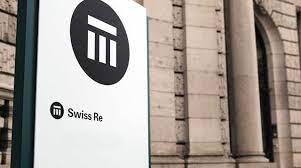The United States’ inflation rate for the 12 months ending in August rose from 4.2 percent to 4.3 percent, the highest rate since 1991.
The White House announced that the personal consumption expenditure (PCE) price index climbed 0.4 percent in August for its sixth straight increase.
An analysis of the PCE indicated that the core rate that strips out volatile food and energy prices rose 0.3% in August. The increase in the core rate over the past 12 months was unchanged at 3.6%, but it was also at a 30-year peak.
The PCE index is viewed as a more accurate measure of inflation than the better known consumer price index as it tracks a broader range of goods and gives more weight to substitution, especially when consumers buy a cheaper product to substitute for a more expensive one.
The government also reported that consumer spending rose 0.8% in August, representing an increase which was just half as big if inflation is taken into account.
Before the Friday’s figures and until very recently, Federal Reserve top officials had insisted inflation would start to fall back to toward pre-pandemic levels of 2% or less by the end of this year.
However, in the past week senior central bank officials acknowledged inflation could remain high well into 2022 following current shortages of crucial business and labour supplies.
A news report Marketwatch.com, an online medium, indicated that the central bank wanted inflation to average 2% a year in the long run, using the PCE gauge as its starting point.
But then, the Fed is prepared to let inflation run above its target for a while to make up for a period of very low inflation over the last decade.
Analysts believe the increase in inflation is tied to the full reopening of the economy as a huge burst of pent-up demand overwhelmed the ability of businesses to keep up, especially with computer chips and other materials are in short supply.
As expected, faced with higher costs, businesses have raised prices, thereby further spiking the inflation rate.
Commenting on the PCE index, Fed Chairman, Jerome Powell, said these shortages were expected to ease by now, but instead it looks like it could get even worse, adding that the shortages could last until next summer.
Most economists still think the Fed is right and that will slip back toward its 2% goal, but that it will take longer to happen.
In his remarks, chief economist at PNC Financial Services, Gus Faucher, said: “Supply-chain problems have led to higher prices for many goods and some services, but some of those high prices are now starting to fall and others are increasing at a slower pace. The danger of runaway inflation is fading.”
Others analysts think inflation could sustain the current upward swing for the next few years.
Commenting on the likely future trend, Joel Naroff of Naroff Economic Advisors, predicted: “I am a strong believer that we are going to be looking at closer to 2.5% inflation for an extended period of time.
“By the Fed saying they are going to inflation average, I think they think the same thing”, Naroff added.




